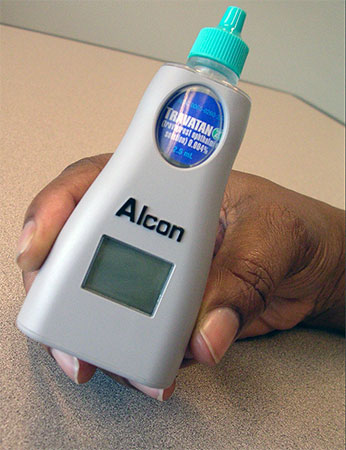 Researchers at the University of Alabama at Birmingham are hoping a telemedicine-based health promotion intervention can improve medication adherence rates among older African-Americans with glaucoma. Glaucoma is the leading cause of irreversible blindness among African-Americans, who are more than three times more likely to develop glaucoma than are Caucasians.
Researchers at the University of Alabama at Birmingham are hoping a telemedicine-based health promotion intervention can improve medication adherence rates among older African-Americans with glaucoma. Glaucoma is the leading cause of irreversible blindness among African-Americans, who are more than three times more likely to develop glaucoma than are Caucasians.“Not only are African-Americans at increased risk for glaucoma, studies have shown that they are at increased risk for being nonadherent with medications for glaucoma,” said principal investigator Laura Dreer, Ph.D., associate professor in the Department of Ophthalmology. “Reasons for nonadherence include age-related memory loss, finances and barriers to care.”
Unchecked, glaucoma can have a serious negative impact on an individual’s quality of life, independence and everyday functioning and can potentially lead to blindness. Standard therapy is the use of pressure-reducing eye drops that can significantly delay or prevent the onset of disease.
Dreer’s study, funded by the National Eye Institute, is recruiting 240 adult African-Americans with glaucoma to determine whether a culturally relevant behavioral health intervention can improve adherence. The multicomponent intervention includes glaucoma education, motivational interviewing and problem-solving training.
“Part of the objective is to plant a seed and help these individuals to reach a better understanding of their glaucoma and to realize the importance of taking increased responsibility for their own health behaviors,” Dreer said. “We’ve made great strides in getting people to take charge of their health and wellness in areas such as diabetes, cardiovascular health and nutrition. We believe glaucoma is deserving of the same effort.”
The study subjects will be divided into two sections. One will receive standard glaucoma therapy, which includes medication, laser treatments, conventional surgery or any combination of these. The second section will receive standard therapy and the telemedicine-based behavioral health intervention.
Participants will have one in-person visit with the research team at the UAB Callahan Eye Hospital, followed by a weekly phone interaction for six weeks.
Researchers will employ a self-measuring drug dispensing tool to determine whether patients are adherent or nonadherent with medications. Standard medication therapy is usually one or two eye drops, once or twice a day. The tool measures how many drops are dispensed at any one time, and records the date and time of dispensation. Patients at UAB’s glaucoma clinic who enroll in the study will use the device for one month. A failure rate of 75 percent or greater will transfer the subject into the full study.
Outcomes will be assessed at three-, seven- and 12-month follow-up visits, by seeing whether glaucoma medication adherence improves in the group getting the intervention.
“The practical question to be addressed is does a culturally relevant health promotion-based intervention improve glaucoma medication adherence among a high-risk segment of the population,” Dreer said. “Information from this project will be particularly useful for African-Americans with glaucoma, their families and eye care providers.”